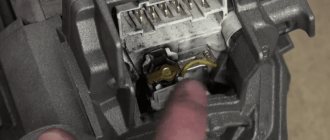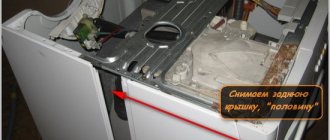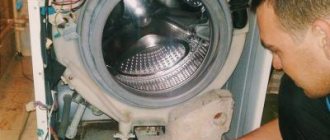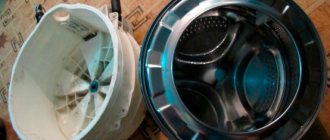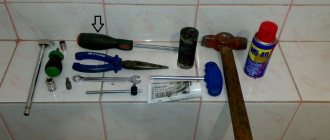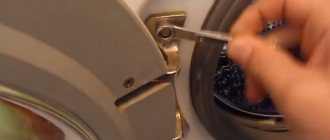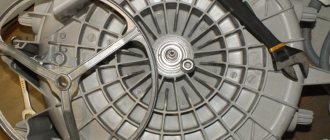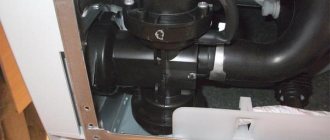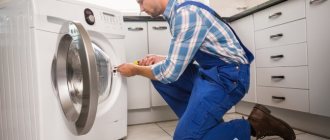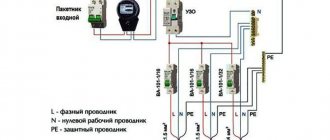The electric motor is one of the central links of any washing machine. He is responsible for the drum speed during washing, rinsing and spinning. If the motor stops working, the wash will not start. Therefore, many users are concerned with the question: is it possible to remove the washing machine motor with your own hands in order to repair or replace it?
If you already have skills in repairing household appliances, then disassembling a washing machine will not seem difficult to you. The main thing is to take into account the type of washing machine, since the motors in this technique can be different: an asynchronous motor without brushes, a regular commutator motor or a direct drive motor.
In this article you will find instructions for dismantling the motor with photos and videos.
How to check serviceability
In the assembly of washing equipment, only inverter (direct drive) and collector units are used. To determine their condition and identify a possible problem, it is worth familiarizing yourself with the diagnostic process step by step. First, let’s figure out how the components of the “heart” of the machine work:
- The stator is made of iron plates with copper windings between them. This part is stationary, but causes the rotor to rotate under the interaction of its magnetic field with its own.
- The rotor consists of a commutator, a core, and a winding. The element acts on the brushes, which transmit voltage to the commutator.
- A tachometer is installed on the housing. It records the speed of revolutions and transmits information to the main module. As a result, the module controls rotation depending on the selected washing mode.
Asynchronous type
This unit is no longer installed in modern washing machines because its efficiency level is not high. It has a simple but reliable design, so it rarely fails. Carrying out home diagnostics is not easy because the mechanism is directly attached to the drum. Frequent causes of failure are bearing wear, motor winding breakage, and insulation failure.
To make diagnostics, the asynchronous unit is removed from the housing, having first disconnected the machine from the network. Further:
- unscrew the screws;
- using a pencil, make marks on how the covers should be positioned relative to the body;
- unscrew two bolts and remove the fan;
- remove the engine covers after unscrewing the screws;
- first inspect the rotor: if it has melted or blackened, a spare part needs to be replaced;
- the motor breaks down when there is an interturn short circuit in the stator (visible by the burnt-out insulation varnish). If no damage is detected during a visual inspection, then the mechanism is checked with a multimeter, which shows the integrity of the working and starting windings. When the device shows even minimal resistance, this is a sign of winding breakdown. In such a situation, the spare part will have to be returned to a service center.
Direct drive type
It is not easy to detect a malfunction on your own. It is recommended to use system tests if they are supported by a specific machine model. When checking, codes appear on the display, deciphering which will help identify the breakdown and understand whether the help of a service center technician will be useful.
If you need to remove the motor for a detailed inspection, the diagram of this procedure will look like this:
- Disconnect the device from the power source.
- Unscrew the bolts around the perimeter of the case and remove the back cover.
- Remove the screws under the rotor that hold the wiring.
- Remove the central bolt that holds the rotor. To prevent the latter from moving, hold it with your hand when unscrewing the bolt.
- Remove the rotor assembly. Behind it is a stator assembly with 6 bolts.
- Unscrew the fasteners from the stator and disconnect the wiring connectors.
- After this, inspect for faults using the example of an asynchronous mechanism.
Collector view
The centrifuge motor of a semi-automatic or automatic washing machine operates on a belt drive with a drum and is easily removed from the housing. Installed on Ariston, Indesit, Samsung, Zanussi, Atlant units. The following scheme is used for diagnostics:
- Unscrew the back/front wall (depending on the modification of the washing machine).
- Remove the motor from under the tank. The electrical component of the unit is on terminals that can be easily opened.
- Now you need to connect the rotor and stator in series, and then apply a voltage of 220 V to the ends. If the unit is working and the automatic transformer heats up slightly, this indicates that there are no problems.
- For diagnostics, an autotransformer with a power of more than 0.5 kW is used. If you power it through the stator and rotor windings, the procedure will be safer (speed control).
The motor is the main component of the washing machine, so checking it should be taken seriously. If the diagnosis is performed incorrectly, this will entail a complete replacement of the mechanism. If a breakdown is detected, it is better to contact a service center for help.
Badly
Interesting 1
Super 1
Types of engines and causes of their breakdown
Washing machines use three types of motors. This:
- Asynchronous. Used in old style washing machines.
- Collector. Installed in all washing machines.
- Inverter. Used only in the most modern models.
An inverter or direct drive electric motor is the most difficult to check due to the assembly features. A system with such a drive is equipped with self-diagnosis, which, if the motor malfunctions, will display an error code on the display. If this does not happen, then you can inspect the device yourself.
The structure of asynchronous and commutator motors is similar. To check them, you will also need to disassemble the CM and remove the motor. The most common problems that occur in collector systems are:
- With brushes. The soft graphite material will wear out over time, especially if you have overloaded the machine frequently.
- With slats. Due to a short circuit in the network or overvoltage, the lamellas on the collector peel off.
- With windings. An interturn short circuit or open circuit could occur in the stator and rotor windings.
Therefore, if the engine on your car does not turn on, proceed to disassembly and inspection.
Inverter type
Direct drive motors can be found on SMA LG and Samsung models.
You can remove the inverter motor yourself for inspection, but it is impossible to repair it yourself if it is faulty.
- With the machine disconnected from power, unscrew all the bolts around the perimeter of the rear panel.
- To remove the motor rotor, remove the screws securing the motor wiring.
- While holding the rotor stationary, remove the central bolt.
- After removing the rotor assembly, unscrew the bolts around the perimeter of the stator assembly.
- After removing the stator, disconnect its wiring.
During inspection, did you find burnt parts? Contact the service center. If you need to replace the motor winding, it will be easier to buy a new one.
Collector type
This type is used in washing machines of the Indesit, Kandy, Samsung, Ariston, Veko, and Electrolux brands.
To check the commutator motor of the washing machine, you need to get close to it:
- Removing the rear panel reveals the engine underneath the tank.
- Note or photograph the location of the wiring and disconnect it from the motor.
- Unscrew the mounting bolts and remove the motor from the housing.
Brushes
The brushes rub against the rotor and therefore wear out. Then contact is lost and the motor circuit breaks. At the same time, the engine begins to lose power, run jerkily, start and stop.
If you notice sparking when connecting the motor to the network, this may indicate problems with the brushes or lamellas. We described methods for checking the engine in previous articles.
- On the sides of the body you will find protruding elements - brushes.
- Unscrew their fastening element and remove it from the housing.
- If they are worn out, replace them in the reverse order.
Even if one brush is worn out more than the other, both parts need to be replaced. Otherwise, this will lead to uneven impact on the rotor and operational problems.
Lamels
During long-term use, the brushes are wiped in the lamellas of the commutator cavity. Also, the lamella may peel off because the rotor is shorted or jammed. You can understand this during a visual inspection. If burrs or irregularities are observed, the anchor is removed and installed on a lathe for grooving.
The gaps between the lamellas are cleaned. To check them, test the gaps with an Ohmmeter. If the device shows a short circuit, it means you need to clean it harder.
You can determine if the lamellas are faulty by turning the rotor. A loud noise indicates a breakdown.
Bearings
Worn motor bearings result in friction between the stator and rotor. Inspect the rotor: if it begins to wear out, it needs to be replaced along with the bearings. When turned, the rotor will rotate unevenly, making scratching sounds.
To remove the bearing from the motor, you will need a special puller. It is selected depending on the size of the bearing. When installing the puller, focus on the inner ring.
To fit the bearing onto the shaft, you can heat it with a blowtorch. After cooling, it will sit firmly in place.
Windings
When the stator and rotor windings are shorted or broken, the engine loses power, hums, but does not turn. If the motor overheats and the thermostat trips, the washing machine will not work and the wash will not start.
The windings are checked with a multimeter - check the wiring and lamellas. It is impossible to reinstall the winding if it malfunctions with your own hands. Therefore, it is easier to replace the SM motor.
Now you know what to check if the engine does not start. Operate the machine according to the instructions, then all its parts will last much longer.
What to do if the winding is faulty
What to do if we find a short circuit or break? The best option is to find the same rotor or the same stator. If we give the engine for rewinding, then they will charge us enough to buy a new engine and still have some change left over. This is due to the fact that in addition to rewinding, the rotor must be centered to avoid its beating.
We conclude that if the windings are really faulty, you should either change the stator or rotor, or completely replace the motor.
What you need to consider when connecting motors from different types of washing machines
The washing machine is connected to the electrical network in accordance with “PUE 7. Electrical Installation Rules”.
Connection diagram of the washing machine to the electrical network PHOTO: 1stiralnaya.ru
Even a superficial acquaintance with the structure of the machine and its electrical circuit ensures its more conscious operation and the ability to minimize the number of emergency situations. A schematic electrical diagram is a graphical representation of the main electrical components of a machine and the connections between them.
There are three types of electric motors in washing machines.
Asynchronous
Most washing machines from previous years use three-phase asynchronous motors, each of which consists of a stationary stator and a rotating rotor. The alternating current initiates a rotating magnetic field in the stator winding sections, which induces a current in the rotor. This secondary induced current interacts with the magnetic field of the stator, and a rotating force begins to act on the rotor, due to which it begins to rotate and transmit its rotation to the devices connected to it.
Engines of this type are simple in design, unpretentious in maintenance, and reliable in operation. The main disadvantages are large starting currents and difficulties in regulating the rotation speed.
Reversible connection diagram for an asynchronous motor with a starting winding PHOTO: elektt.blogspot.com
Collector
In commutator motors, the windings are located on both the stator and the rotor. Current is supplied to the rotor through a device called a “collector,” which consists of lamellas attached to the rotor shaft and two “brushes” that are stationary relative to the stator.
Connection diagram for commutator motor PHOTO: elektt.blogspot.com
The commutator motor operates on both alternating and direct current. Here it is easy to regulate the speed by changing the supply voltage. As an industrial device, you can use a dimmer from the lighting system that is suitable in terms of power.
Inverter
An inverter motor in a washing machine is the most modern solution. The principle of operation is that in the built-in inverter, the alternating current of the electrical network is converted into direct current, and then again into alternating current of the desired frequency, which determines the speed of rotation of the shaft. It, unlike the commutator type, has no brushes and makes less noise. No brushes - no wearing parts, so nothing needs to be replaced regularly. But you have to pay for an inverter; such a machine is more expensive.
Differences between electric motors
The differences between electric motors by type are given in their descriptions. The asynchronous motor is the simplest in design. The collector has the ability to easily adjust the rotation speed. And the inverter motor is directly connected to the drum shaft without belts and gears. In short, more modern engines make less noise and are subject to speed control, but are more expensive.
UBL
Changing the lock is quite simple. Let's take a closer look:
- We open the hatch and pull off the metal clamp with a spring that secures the cuff to the body.
- We pull back the rubber at the location of the UBL and hold it from the inside with our hands.
- We unscrew the screws that secure the lock and pull it out.
- We pull out the chip with the wires.
- We install a new one.
- We tighten the cuff and clamp. Screw it on.
Burnt UBL
We check the operation of the SMA.
We have described typical malfunctions that can occur in washing machines. Most of them can be repaired with your own hands without calling a specialist. It's not always that simple. And if you cannot cope, or the breakdown is unclear, then contact a specialist.
Table of correspondence of spare parts to certain models.
Video
During the spin cycle the program freezes or the function does not work
The reasons for the lack of spin can be either mechanical or software at the level of control electronics. To exclude a breakdown at the electronics level, you need to run the spin function separately and see if fault codes appear on the control panel of the washing machine. If the machine has a touch control and a large screen, then a failure of the function will be accompanied by the symbols “ERROR”, followed by a digital error code. The analog control system is a little more complicated. It is represented by indicators that, when an error occurs, begin to glow or flicker.
One of the most common reasons for the failure of the spin function is the failure of the tachometer sensor or a break in the wires transmitting the control signal from the tachometer to the engine. In this case, DIY repairs seem to be quite problematic. Since it is necessary to have professional testing equipment.
Tachometer sensor
Mechanical causes of failure or poor performance of the spin function can be eliminated independently:
The belt transmitting torque from the motor to the drum has stretched. This problem occurs especially often in compact (narrow) washing machines.
Drive belt
Wear on engine brushes occurs during intensive use over a long period of time. At the same time, the washing machine works quite successfully at low speeds, but for spinning (maximum speed) the power is no longer enough.
Remove the electric motor
Remove the brushes
To replace the brushes, you need to remove the engine and find the brush holders on it (they may look different for different models), remove one of the brushes and purchase similar ones in the store. The need to replace brushes can be determined by the size of their protrusion from the brush holder. If at least one of them has less than 7 mm, then both cheeks need to be replaced.
Kinds
The first thing you should do before starting diagnostics is to determine what type of motor is installed in your washing machine. There are several types of motors that manufacturers use to equip washing machines. Let us present brief information about them in the form of a table.
Asynchronous washing machine motor
Commutator motor of a washing machine
Brushless washing machine motor
| View | Main design elements | Advantages | Flaws |
| Asynchronous | starter and rotor |
|
|
| Collector | starter, rotor, tachogenerator, electric brushes |
|
|
| Brushless (direct drive) | starter and rotor |
|
|
Solving the problem with the activator
Some problems are caused by a faulty activator in the car. Leaks can occur due to improper connection of equipment or wear of O-rings and various rubber bands. But don't get ahead of yourself
It is important to first understand what an activator is
This is a movable element, due to the rotation of which washing occurs. Impaired mobility leads to a stop in the work process. Sometimes the thermal relay is triggered and the machine simply turns off. Before making repairs, you should familiarize yourself with the main problems caused by the activator. You also need to understand how to troubleshoot such problems.
So, if the tank is overloaded, then the activator will not spin normally when starting. He may even stop altogether. The machine will start humming, and the solution to the problem will be to unload it. After this, you need to wait about 15 minutes and restart. Repairing the Malyutka washing machine may involve simply removing threads and foreign objects, as well as rags from the shaft. It is part of the activator.
If the machine starts to hum and then turns off, then the repair consists of cleaning the shaft. Sometimes it happens that the node being described turns out to be skewed. It continues to spin, but after washing the laundry is often severely wrinkled or even torn.
When the activator touches the walls of the tank, you will hear a strong hum. The machine may turn off for no apparent reason. The solution is to unfold the device and remove the plug. The activator is unscrewed, and then the thread is cleaned. The assembly is again installed in place until it stops. After this, the device should work properly.
Removing the front wall
The time has come to remove the front wall, which has long been looking at us with its sad glass gaze and asking us not to remove it. Let's not listen to the pleas of modest components: necessity is necessity.
But in order to dismantle the front wall, you must first disconnect the cuff (the elastic band located immediately behind the door) so that it no longer blocks the panel. Removing the cuff is not a difficult process: just feel for the spring holding the cuff and press on it, and the cuff will immediately loosen, and you can put it in the tank so it doesn’t get lost.
Pros and cons of the profession
pros
- The master receives a very good income.
- Different formats of work and profit are possible: private customers, piecework payment, service center or manufacturing companies.
- There is enough work both in megacities and on the periphery.
- You can quickly complete initial training, which lasts 3-4 months.
- The opportunity to take courses at the employer’s company, which allows you to gain knowledge, a number of practical skills and subsequent stable orders.
Minuses
- The master is not protected from unforeseen situations and claims from clients.
- The working day may be irregular.
- Possible unfavorable working conditions.
Features of the household appliance
Kandy washing machines are available in a wide range of models. The differences are not only in the details and breadth of functionality, but also in the location of some components. To better cope with the disassembly task, it is convenient to navigate according to the diagram of a specific model .
General layout of the washing machine:
Diagram of the tank and drum structure:
The windings are broken or shorted
Acceleration problems also arise when the winding is damaged: the motor does not start or the drum rotates very weakly. The fact is that short circuits occur in the wire turns, the engine begins to overheat, the thermistor is triggered, and the system urgently turns off the power for safety reasons. At the next start, the situation repeats until the temperature sensor burns out, and then the engine itself fails.
The winding is checked with a multimeter according to the following algorithm:
- turn on the tester in the “Ohmmeter” mode;
- we attach the probes to the adjacent lamellas;
- We evaluate the resistance (the norm is from 0.1 to 0.4 Ohms).
Repairing the winding yourself is very dangerous. It is better to turn to professionals or purchase a new engine.
Share your opinion - leave a comment
Carrying out disassembly
If you are wondering how to disassemble the Malyutka washing machine, then first you must remove the plug from the hole located in the back of the electric motor casing. The oblong hole of the impeller must be aligned with the hole in the casing. Through it, a screwdriver is inserted into the engine rotor. The activator is unscrewed.
You must insert a key into the hole in the activator housing and unscrew the housing. This will allow you to disconnect the tank. Disassembling the Malyutka washing machine at the next stage involves unscrewing six screws. Next, you can remove the flange and unscrew the locknut, as well as the rubber nut. They fix the switch. Now you can remove the washer and unscrew the screws that hold the casing halves together. Below it is an electric motor and other equipment elements.
Preparing to disassemble the Candy washing machine
Disassembling a Kandy washing machine is not an easy task and requires preparatory measures. To carry out repair work you will need to select certain tools:
- set of screwdrivers (slotted, Phillips);
- pliers;
- a set of keys;
- hexagons included in the set;
- small hammer.
If you plan to saw the tank, you will also need an appropriate tool to separate it into two halves. After repair work, the tank will need to be welded to restore its tightness.
To make the work easier, you will need gloves and lubricant, which will be useful if the contacts become stuck. WD-40 is a good option.
Before starting disassembly, the washing machine should be de-energized and disconnected from the water supply. It is also advisable to drain the remaining water from the tank in advance . This can be done through a drain filter, so you need to stock up on rags and a low container for draining water. An alternative option for draining is to release the end of the drain hose from the tap into the sewer, and lower its end into a basin placed on the floor.
It will be useful to take photographs of all stages when disassembling the washing machine. This will help you assemble the washer without any problems in the future. You can also make marks on parts with a marker.
The most common causes of engine failure
- Failed electric brushes;
- Broken winding in the rotor and stator;
- Collector lamellas.
Replacing electric brushes
These are conductive graphite cubes with wires that rub against the commutator.
The reason for replacing motor brushes may be:
- loss of rotational force of the drum or its complete stop;
- unusual noise when the washing machine is operating.
The most common cause of failure is tank overload. Also, electric brushes wear out quickly when spinning at maximum speed or due to a short circuit in the turns of the electric motor winding, a problem with the belt that connects the motor to the drum, it can jump off the pulley or break.
A visual inspection of the brushes will also help you understand the need for replacement. If they spark during operation or there is a black coating on the surface, the parts need to be replaced.
Of course, this is an inexpensive engine element, and repairs can be done at home. It is enough to purchase a suitable brush model from a specialized store or service center. The main thing is to choose and replace the brushes on the washing machine correctly; they must fully match the type of motor and it is better if it is an original set from the washing machine manufacturer.
Slats need replacement
This is precisely the component of the commutator along which the electric brushes slide. They transmit current through the rotor winding to the motor. The plates themselves are rarely subject to wear; the cause of failure can be the breaking of the cord in the winding in the places where the lamellas are attached or their detachment.
This happens, most often, also due to improper operation of the device, for example, in a top-loading machine, the washing process was started with the drum flaps open or failure of the bearings.
If the delamination is small, repairs are made on a special machine by grooving the collector. At home, you can get by with simple fine sandpaper. The principle is the same - the lamellas are sharpened, then the space between them is thoroughly cleaned of dust and shavings.
You can check the electric motor for this malfunction by slowly turning the rotor; if a characteristic sound appears, then most likely the reason is in the lamellas.
Open circuit or short circuit in the rotor or stator winding
These are the most common causes of loss of engine power or complete cessation of its operation, which can be a consequence of:
- overheating of the motor housing resulting from short circuits in the winding. The normal temperature should not be higher than 80 degrees; if it rises to 90 degrees, the thermostat is triggered, stopping the engine;
- winding insulation failure. In this case, repairs at a service center are inevitable. Most often the entire engine has to be replaced. Re-winding at home is not recommended.
A break in the winding can be detected using a multimeter in the mode of measuring the resistance between the lamellas. The norm is 0.1-0.4 Ohm.
A breakdown or short circuit in the electric motor of a washing machine can cause a malfunction and failure of other parts of the device, for example the command device (another expensive part of the machine), power triac, and reverse relay. As you can see, the most common causes of breakdowns are non-compliance with operation instructions or instability of the electrical network. To increase service life, it is recommended to use the device according to the instructions, and to protect against power surges, install a circuit breaker and connect the washing machine only through this protective device.
- 10 best ATLANT washing machines according to customer reviews
- 10 best built-in washing machines
- 10 best washing machines under 15,000 rubles according to customer reviews
- 10 best washing machines under 25,000 rubles according to customer reviews
- 13 best washing machines from 40,000 to 50,000 rubles according to customer reviews
We remove what interferes and distracts
Having removed all the covers and panels, we saw all the ins and outs of the washing machine in the literal and figurative sense of the word. All unnecessary parts now need to be removed, and therefore the pressure switch hoses, the hose coming from the place where the tray (powder receptacle) was, the inlet hose and the drain pipe are removed from the car overnight.
The word “hose” is too much, isn’t it? Briefly speaking, we can assume that all the large hoses that catch your eye when looking at the washing machine in its current form are removed. To remove the hoses, you will need to unscrew the clamps securing them, and then directly remove the hoses. It is advisable not to remove the clamps from the hoses, especially if the latter are of different diameters.
How to choose?
Choosing a washing machine is an important and responsible task that requires a lot of attention and effort.
Experts recommend taking into account a number of factors.
Machine type. There are several types of automatic washing machines: frontal and vertical. However, they differ from each other in the way they load and unload laundry. Thus, front-loading washing equipment has a hatch for laundry on the outer front part of the body. At the same time, vertical machines are equipped with a hatch on top. The choice of one device or another depends solely on your personal preferences.
Device dimensions. The detailed size range of washing machines is described above. This characteristic is the most important when choosing a device. First of all, you should focus on the size of the room in which the equipment will be placed.
Drum volume. This indicator is the most important when choosing a device. So, depending on the number of people living in your house, you should choose a machine that is more or less voluminous. Load volume can range from 1 to ten kilograms. Please keep in mind that the volume of the drum affects the overall dimensions of the washing machine.
Functionality. Modern automatic washing machines are equipped not only with washing, rinsing and spinning functions, but also with a number of additional features. Such additional functions include a leakage protection system, the presence of additional modes (for example, a gentle or quiet wash program), drying, etc.
Control type. There are 2 main types of control: mechanical and electronic. The first type is characterized by the ability to set washing parameters using special buttons and switches located on the front panel of the device. Electronically controlled cars only require a mode task, and they configure the remaining parameters independently.
Washing class. There are several washing classes of modern washing machines. They are designated by Latin letters. In this case, A is the highest class, and G is the lowest. Amount of energy consumption. Different models of automatic washing machines have different levels of energy consumption. This indicator is regulated by the amount of money you will pay for the electricity used.
Price. High-quality home appliances cannot be too cheap. That's why if you see a low price, it should make you suspicious. The low cost may be due to the fact that you are dealing with an unscrupulous seller or purchasing low-quality (or counterfeit) products.
Appearance
When purchasing a washing machine, you should pay attention to its functions, safety indicators, and external design. Choose a device that will fit perfectly into the interior of the bathroom, kitchen or any other room where you will place a household device.
Automatic washing machines are devices that are real helpers in everyday life. Today, there are a large number of types and models that differ in a number of key characteristics.
For information on choosing an automatic washing machine, watch the following video.
Removing the Top Control Panel
Before we begin the actual process of dismantling the top control panel, we need to gain access to the screws that secure it.
One of them is located under the tray where the powder is poured. Therefore, first of all, with a slight movement of the hand and pressing a special button (on LG machines of recent years there is always a button that allows you to easily remove the tray), the tray is removed from its usual place.
One or two more screws are located on the opposite side, but we already have access to them, since we removed the top cover in the first step, and therefore, without thinking for a second, we begin to dismantle the top control panel, unscrewing the screws. After unscrewing all the screws, try to slightly pull the panel towards you: if this is successful, then you can safely remove the panel, because nothing is holding it in place.
Depending on the model of the machine, the control panel can either be hung on a service hook specially prepared by the manufacturer for such cases, or simply carefully moved to the side without breaking the wires: do not forget that we are not breaking the washing machine, but trying to do something to “heal” her.
Repair of washing machine faults
Minimal repairs
washing machine can be accomplished by any owner or housewife. Even a child can fix a machine if the cause of its malfunction is a simple misunderstanding.
It is not difficult to understand the structure of a washing machine and understand the principle of its operation. But to eliminate serious
a malfunction, even knowing its cause, is an unsafe activity both for the owner of the washing machine and for the washing machine itself.
To carry out work of medium complexity and particularly complex repairs, special knowledge and experience are required. Serious breakdowns are repaired by a qualified washing machine repair technician.
How does a washing machine work? What kind of malfunction may occur? How to distinguish a banal misunderstanding from a serious breakdown that should be fixed by a professional?
Disconnect the wires from the tubular electric heater (TEH)
The time has come to meet the electronics and start turning off the heating element, an item that is almost the most important part of the entire washing machine as a whole. There will be no electric heater - the water will be icy... well, or rather, the temperature set by the management organization.
In order not to confuse anything, take as clear a picture as possible of how the heating element was connected before dismantling. At the beginning of the article, we already recommended making a photo report of the entire process, but special attention should be paid to disconnecting the wires from the heating element.
Any mistake can cost a fatal breakdown of the tubular electric heater, and replacing it will cost a pretty penny... although, of course, if the LG washing machine is being disassembled precisely because of a faulty heating element, you don’t have to think too much, but still take precautions.
Types and their characteristics
All motors that are found in modern automatic washing machines are divided into three types.
Collector
This motor is the most common today. Most washing machines are equipped with this device.
The design of the commutator motor consists of the following elements:
- body made of aluminum;
- rotor, tachometer;
- stator;
- a pair of brushes.
Commutator motors can have a different number of leads: 4, 5 and even 8. A brush design is necessary to create contact between the rotor and the motor. The collector power units are located at the bottom of the washing machine. A belt is used to connect the motor and the drum pulley.
Brushed motors are not as bad as they might seem. They also have positive parameters:
- stable operation from direct and alternating current;
- small sizes;
- simple repair;
- clear diagram of the electric motor.
Inverter
This type of motor first appeared in washing machines only in 2005. This development belongs to LG, which has held its position as a leader in the global market for several years. This innovation was then used in models from Samsung and Whirlpool, Bosch, AEG and Haier.
Inverter motors are built directly into the drum. Their design consists of a rotor (a cover with permanent magnets) and a cage with coils, which is called a stator. The inverter brushless motor is distinguished by the absence of not only brushes, but also a transmission belt.
The armature is assembled on magnets. During operation, voltage is supplied to the stator windings, having undergone preliminary conversion to inverter form.
Inverter power units have many advantages:
- simplicity and compactness;
- economical energy consumption;
- very low noise generation;
- long service life due to the absence of brushes, belts and other wearable elements;
- reduced vibration level during spinning even at high speeds, which can be selected for operation.
Bearings
On Samsung washing machines, such repairs occur after the service life has expired - after 10-15 years of operation. Signs of wear:
- Rattling, clanging sound - especially when spinning clothes.
- If you move the drum in different directions, play is visible.
Changing bearings is a difficult job that requires skill and the right tools. But it is possible to do it yourself. We recommend replacement instructions for Samsung SMA.
Bearing seat after heavy wear


